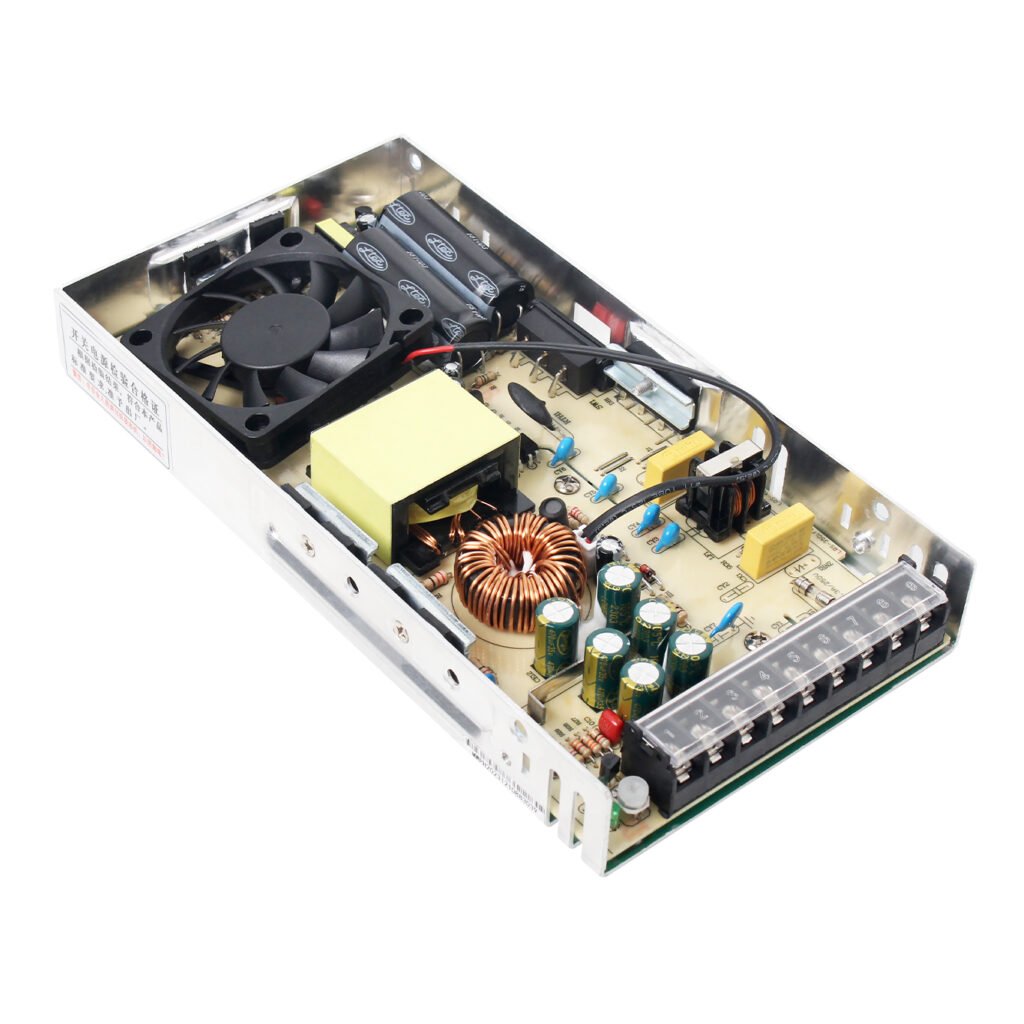
A switching power supply circuit is a type of power supply that utilizes modern power electronics technology to control the on-off time ratio of a switching device, thereby maintaining a stable output voltage. Typically, it consists of a pulse-width modulation (PWM) control IC and MOSFETs. The working principle involves rapidly switching the switching device on and off to convert one form of electrical energy (voltage or current) into another. Here’s a detailed breakdown of the switching power supply circuit:
Key Components
- Input Filter Circuit: Filters out noise and interference from the input power grid to ensure stable operation of subsequent circuits.
- Rectifier Circuit: Converts alternating current (AC) into direct current (DC) for the subsequent stages.
- Power Conversion Circuit: The heart of the switching power supply, it converts the DC voltage into a high-frequency AC voltage through rapid switching of the switching device. This high-frequency AC voltage is then transformed by transformers or inductors for voltage step-up or step-down.
- Output Filter Circuit: Converts the high-frequency AC voltage into a smooth DC voltage suitable for powering loads.
- Control Circuit: Detects the output voltage or current, compares it with a preset value, and adjusts the on-off time ratio (duty cycle) of the switching device to maintain a stable output voltage or current.
Working Principle
The working principle of a switching power supply circuit can be summarized as follows:
- Input Voltage: AC power from the grid is first processed by the input filter circuit before entering the rectifier circuit.
- Rectification: The rectifier circuit converts AC into DC, but this DC contains significant ripple components.
- Power Conversion: The switching device in the power conversion circuit, driven by the control circuit, rapidly switches on and off, converting the DC voltage into a high-frequency AC voltage. This high-frequency AC voltage is then transformed by transformers or inductors to achieve the desired voltage range.
- Filtering: The output filter circuit converts the high-frequency AC voltage into a smooth DC voltage for the load.
- Feedback Control: The control circuit monitors the output voltage or current, compares it with a preset value, and adjusts the duty cycle of the switching device accordingly to maintain a stable output.
Advantages and Disadvantages
Advantages:
- High Efficiency: Due to the use of high-frequency switching technology, switching power supplies can achieve efficiencies of over 80%, much higher than traditional linear power supplies.
- Small Size and Lightweight: High-frequency switching allows for a significant reduction in size and weight, making them ideal for integration into electronic devices.
- Wide Voltage Range: Switching power supplies can operate stably over a wide input voltage range, accommodating different grid voltages worldwide.
- Comprehensive Protection: They often include overcurrent, overvoltage, and short-circuit protection features to ensure safe operation.
Disadvantages:
- Electromagnetic Interference (EMI): High-frequency switching can generate significant EMI, requiring additional filtering and shielding measures.
- Output Voltage Ripple: Rapid switching can introduce ripple into the output voltage, which must be suppressed by the output filter circuit.
- Relatively High Cost: Compared to traditional linear power supplies, switching power supplies can have higher design and production costs.
Applications
Due to their efficiency, energy savings, and miniaturization, switching power supply circuits are widely used in various electronic devices, including computers, communication equipment, industrial control systems, medical devices, and household appliances. As technology advances, switching power supply technology continues to evolve and improve, providing reliable and efficient power solutions for electronic devices.
